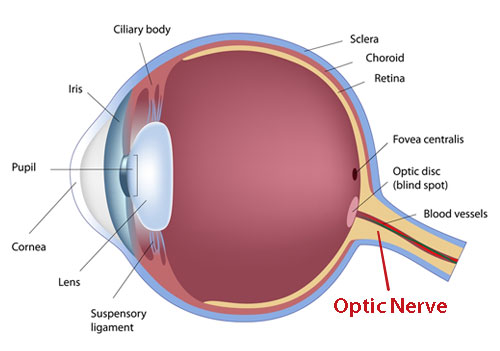Our Patient-Centric Approach to Treatment
Georgia Ophthalmologists believes treating each person as an individual is an essential part of each patient’s #VisionForLife.
Glaucoma can cause serious vision loss.
There are two major types of glaucoma: Open-angle and Narrow-angle
Open-angle Glaucoma
There are four major risk factors to the development of open-angle glaucoma:
- Family history
- Getting older
- Being African-American or of darker skin pigmentation
- Having high eye pressure
Unfortunately, there are no obvious early symptoms for open-angle glaucoma, so in most cases the only way to discover its presence is through an in-depth eye examination. Once blindness from glaucoma begins to set in, its effects are often irreversible. Don’t delay in having your routine eye examination to evaluate for the possibility of glaucoma. With early diagnosis and treatment, vision loss can be prevented.
If you have already been diagnosed with glaucoma, we provide advanced treatments that include drops, laser and surgical procedures that help control eye pressure in order to avoid vision loss from this sight threatening condition.
Narrow-angle Glaucoma
Narrow-angle glaucoma can lead to an attack of angle closure glaucoma. This condition can lead to vision loss in a matter of 24 to 48 hours. The most common symptoms are:
EYE PAIN
Internal pressure inside the eye can cause eye pain, headache and even nausea or dizziness.
DISTORTED VISION
Fluid build-up in the eye can cause problems like blurriness, blind spots, or total vision loss.
REDNESS OF THE EYE
If redness occurs with nausea, headache, or eye swelling, it could be a symptom of glaucoma.
DILATED PUPILS
Acute glaucoma attacks can cause dilated pupils that don’t respond normally to light.
-
EYE PAIN
Internal pressure inside the eye can cause eye pain, headache and even nausea or dizziness.
-
DISTORTED VISION
Fluid build-up in the eye can cause problems like blurriness, blind spots, or total vision loss.
-
REDNESS OF THE EYE
If redness occurs with nausea, headache, or eye swelling, it could be a symptom of glaucoma.
-
DILATED PUPILS
Acute glaucoma attacks can cause dilated pupils that don’t respond normally to light.

What treatments are available?
While glaucoma cannot be cured, it can be controlled. Options include eye drops, medication, laser procedures, and surgical procedures.

How do I know which glaucoma treatment is right for me?
Every patient is different. Your eye care provider will conduct a thorough examination and discuss the treatment option that is right for you.

The Georgia Ophthalmologists Approach
There are various medicinal and surgical options to treat glaucoma. During your consultation, your surgeon will discuss which one best fits your needs.

Patients Say
Glaucoma is a serious condition.
If untreated, it can result in permanent loss of vision.
Glaucoma is a common eye condition in which the fluid pressure inside the eyes rises because of slowed fluid drainage from the eye. If untreated, constant increased pressure can damage the eye’s optic nerve resulting in vision loss and blindness. However, with early detection and treatment, you can often protect your eyes against serious vision loss.
The optic nerve is a bundle of more than 1 million nerve fibers and connects the retina to the brain. The retina is the light-sensitive tissue at the back of the eye.

During your glaucoma consultation, your surgeon will discuss treatment options and which one is best for you.
1CONSULTATION
During your consultation, your ophthalmologist will perform a complete eye examination that includes a thorough medical history. Your ophthalmologist will determine the status of your glaucoma, and which treatments will be most effective for you – either medication or a procedure.
2SCHEDULE AN APPOINTMENT
If a procedure is recommended, you’ll schedule an appointment time that works for you, using our easy scheduling system. Plan to have someone drive you to and from the appointment; plan for about thirty minutes in surgery followed by an hour in recovery.
3THE PROCEDURE
Medication
Eye drops and medication used in managing glaucoma decrease eye pressure by helping the eye’s fluid to drain better or decreasing the amount of fluid made by the eye. There are many types of medication available to manage glaucoma, classified by their active ingredient. Your eye doctor will examine your disease status and recommend a treatment program specifically tailored for you.
Laser surgery
When traditional approaches like eye drops and laser procedures have been exhausted, these solutions emerge as alternatives delivering exceptional results.
Your surgeon will assess your case and lifestyle, providing personalized recommendations to determine the most suitable solution based on your glaucoma type and eye health.
iStent
The iStent is a tiny, FDA-approved device to manage open-angle glaucoma during a cataract procedure . In the eye’s drainage system, the iStent helps improve fluid outflow, reducing intraocular pressure (IOP). Lowering IOP can slow down the progression of glaucoma and reduce the need for glaucoma medications.
Hydrus
Hydrus Microstent is another innovative device designed to treat glaucoma and is used in conjunction with a cataract procedure. The Hydrus microstent is a tiny, flexible tube inside the eye’s drainage canal to improve fluid outflow. By enhancing the eye’s natural drainage system, the Hydrus microstent helps to lower IOP and manage glaucoma effectively.
Omni
The Omni Surgical System is a minimally invasive glaucoma procedure (MIGS) device offering a comprehensive treatment approach. It allows the surgeon to customize the treatment based on the patient’s needs. The Omni device features three functions in one system: creating a new drainage pathway, removing the eye’s natural lens, and placing an intraocular lens (IOL) for vision correction. This versatile device helps manage glaucoma while addressing other eye conditions.
Dr. Jose Bigles
Dr. Jose Bigles is a fellowship-trained refractive surgeon experienced in treating a wide variety of ophthalmic disorders, and specializes in restoring vision through cataract and Lasik correction. Contact our office to schedule an examination to diagnose and treat glaucoma.
LEARN MOREFAQ
-
What is glaucoma?
Glaucoma is actually a group of eye conditions that damage your eye’s optic nerve, which is vital for good vision. It usually happens when fluid builds up in the front part of your eye. That extra fluid increases the pressure in your eye, damaging the optic nerve. There are several types of glaucoma, caused by different factors but ultimately they all affect optic nerve function. The two most common types are:
- Open-angle glaucoma – the most common form, affecting about three million Americans. It occurs when the eye’s drainage canals become blocked over time, sometimes exhibiting no symptoms. In this case, the entrance to the drainage canals are clear and should be working correctly but are clogged further inside the drainage canals, similar to a clogged pipe below the drain in a sink.
- Narrow-angle glaucoma – also known as acute glaucoma or angle-closure glaucoma. It is much less common than open-angle glaucoma but still just as serious. In this case, the drainage canals get blocked or covered over, like a sink with something covering the drain.
-
How do I know if I have glaucoma?
In open-angle glaucoma, the blockages to the eye’s drainage canals happen gradually, over time, so symptoms slowly develop, and in many cases are not even noticeable. Some symptoms may include blurry vision and gradual loss of peripheral vision.
In narrow-angle glaucoma, the drainage canals quickly clog, causing the eye pressure to rise very quickly, and you may exhibit severe symptoms such as hazy or blurred vision, severe eye and head pain, nausea or vomiting, and sudden sight loss. If you exhibit any of these symptoms, you should seek immediate medical attention.
Regular eye exams, even if you are showing no symptoms, are an important part of maintaining good eye health. Your eye exam should include testing for glaucoma, among other conditions, and should be done at least annually, especially as you get older.
-
Can glaucoma be cured?
Glaucoma has no cure but if caught early, it can be treated to halt or slow the loss of eyesight. Early detection is vital to keeping the disease from developing into a more serious condition.
-
How is glaucoma treated?
During your glaucoma consultation, your surgeon will discuss treatment options and which one is best for you. The treatment recommended by your surgeon depends upon the nature and severity of your case. While glaucoma cannot be cured, it can be controlled, and some options include eye drops, pills, laser procedures and surgical operations. Treatments aim to reduce the intraocular pressure and prevent further damage to the optic nerve. Intraocular pressure can be reduced by increasing the drainage of aqueous humor or reducing its production.
-
Medication
Eye drops and pills used in managing glaucoma decrease eye pressure by helping the eye’s fluid to drain better or decreasing the amount of fluid made by the eye. There are many types of medication available to manage glaucoma, classified by their active ingredient. Your eye doctor will examine your disease status and recommend a treatment program specifically tailored for you. Medication used to treat glaucoma is a lifetime commitment; it is important to remember that you must follow your surgeon’s medication program to effectively treat your glaucoma and keep it from developing into a much more serious condition.
-
Laser procedure
For more advanced cases of glaucoma that may no longer respond to medication, there are two types of laser procedures available for treatment, both of which are performed in both the Covington and Athens office.
- Selected Laser trabeculoplasty (SLT) treats open-angle glaucoma, caused when fluid does not drain properly from the front of the eye, causing a dangerous increase in your eye’s fluid pressure. The procedure uses a laser to adjust the drainage angle at the front of your eye, so that fluid flows out of the eye as it should.
- Peripheral Laser iridotomy (YAG PI) treats narrow-angle glaucoma caused by the iris blocking the drainage from your eye and causing a sudden and dangerous increase in your eye’s fluid pressure. The procedure uses a laser to create a tiny hole in your iris, which helps the fluid flow naturally in and out of your eye and helps the iris return to its normal position.
-
Will the laser glaucoma procedure hurt?
Just before the procedure, anesthetic drops are used to numb the surface of the eye. A lens is then placed on the eye to perform the laser procedure. The procedure usually takes about 5 minutes and it is unusual for patients to experience even mild pain. After the procedure, the eye may be a little red, light sensitive, or uncomfortable, and there may also be a mild headache due to the eye drops given prior to treatment.
-
iStent
Since glaucoma and cataracts are both common diseases for seniors, medical technology has advanced with a way to combine treatment for both conditions in the same surgical procedure. For patients with mild-to-moderate glaucoma, your eye surgeon may recommend implanting an iStent during your cataract procedure. iStent works like the stents used to prevent heart attacks and strokes. When implanted in the eye’s drainage canal, it creates a permanent opening through the blockage to improve the eye’s natural fluid outflow, which then improves the outflow of fluid from the eye and thus lowers and controls the pressure within the eye.
A recent study showed a high success rate for iStent patients. After six months, 85 percent of cataract patients who also received iStents saw their eye pressure improve to the point that they didn’t need to use eye drops. These results persisted at the one-year time point.
While the implantation of iStent can reduce your use of glaucoma medications, this will be at the discretion of your eye surgeon, and regular eye exams are important to monitor your disease progress.
-
How long will I be in the procedure center, and how long will my recovery be?
Glaucoma correctional appointments are an out-patient procedure performed onsite at Georgia Ophthalmologists’ eye procedure suites, located at both its Covington and Athens offices. Most glaucoma procedures take less than 5 minutes, but adding in pre-operative preparation and onsite recovery, you should plan to be at the surgery center for about 90 minutes.
Glaucoma treatments require only topical anesthetic drops. Recovery time after a glaucoma procedure varies per patient and per procedure, but most patients heal almost immediately after their procedure. Usually there are no limitations after glaucoma laser procedures and most patients return to their normal activities the following day.
-
How successful is a glaucoma procedure?
The vast majority of patients report that their eye pressure has decreased after their glaucoma procedure, improving their eye health overall. Recovery and success rates vary based on disease progression and treatment procedure.
- Selective laser trabeculoplasty (SLT) can take about 6-8 weeks to lower your eye’s pressure. It after three months, your eye’s pressure is still too high, your surgeon may recommend an additional laser procedure, more medication or another type of procedure.
- For Narrow-angle glaucoma, peripheral laser iridotomy (YAG PI) can show results within just a few hours after your procedure, and anti-inflammatory eyedrops are usually prescribed for a few days.
-
How much does it cost to treat glaucoma?
Most glaucoma treatments are covered by insurance. Our experienced counselors will discuss the details of your coverage prior to undergoing any treatment.
Vision For Your Lifestyle
SURVEY FOR CATARACT PATIENTS
You have an important decision to make about your vision future. This survey is designed to help us understand your vision goals so we can provide you with the best possible lens for your lifestyle.
-
General Contact info@georgiavisioncare.com
Contact an Office
-
Phone (770) 786-1234
Fax(770) 385-0813

